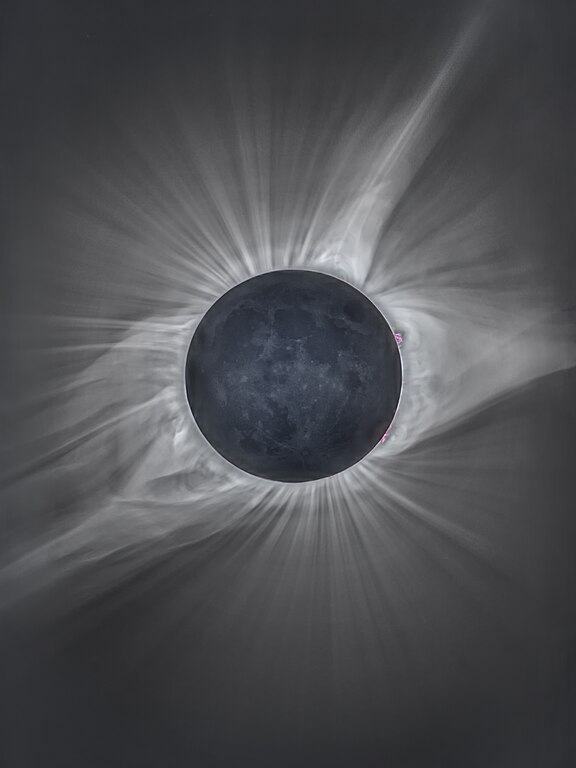Note: Never look at the sun without proper eye protection. If you're using unprotected binoculars or telescopes you will experience INSTANT permanent eye damage.
Upcoming Eclipses: Eclipses Future and Past
External Resources:
My in-persons
From April 8, 2024, Mazatlan. MX. (unfortunately, the cloud layer was in good focus, the sun not...)
More content on this to follow soon as well as some summaries of the next good Totatility Opportunities.
My video and observations from the Great Eclipse of 2017 is here: Eclipse 2017 - Totality in Oregon
My long-ended thoughts about it are here: My First Totality: Instant Analysis
There are only two types of Solar Eclipse Experiences, really:
- Total - where the Sun gets completely covered by the Moon, and the sky and everything around you is dark, and
- Everything Else.
The "Everything Else" can range from the moon just slightly grazing the sun's position to the moments of 99% coverage immediately before, after or besides complete coverage. The intensity of the experience is probably logarithmically related to the coverage. 1% is a blip, 10% is a curiosity, 90% is pretty amazing.
Above 90% or so, it becomes something beyond what's happening with the Sun and Moon. The ambient light gets... "different". The air cools. Birds notice. Shadows get sharper (the Sun is not a "point light source". It's half a degree wide. It makes shadow edges blurry. We don't notice because that's what we're used to. When the most of the sun is blotted out, it approaches "point source" and the shadows edges get knife's edge.
As you get very close to totality, you start seeing parts of the sun you've never seen before: the corona, the chromosphere, "beads".
Totality is a typical night sky with Mercury and Venus shining (near the Sun) - guaranteed - and maybe Mars, Jupiter, and Saturn. That's not all that rare, actually. You can see some of that on any given night.
What you never see, except during Totality, is the sky dominated by a white fire-cloud with circular hole in it.

Depending on how close the Moon is (it varies) the size of the Moon's shadow varies. The larger the shadow (and the closer to the center of its path you are), the longer the totality - seven minutes is about as long as you can experience totatilty, four minutes will be the April 2024 eclipse). The larger the shadow, the darker the sky, the dimmer the "sunset/sunrise" along the horizon - the horizon never gets "midnight dark".
If you have the chance to get in Totality, it is fundamentally better. It's the full "partial experience," plus that "next level" experience. The close you can get to the shadow's centerline, the "deeper" the experience.
At its widest, the Moon's full shadow (the "umbra" (think: umbrella)) is 170 miles (270 kilometers) wide. When the Moon is farther away in its orbit it is less, including negative width. That's when the cone of the shadow (remember, the sun is half a degree wide, which is the angle of the shadow) doesn't reach the ground. This is when "annular" eclipses occur - the "Ring of Fire" eclipses - like the October 14, 2023 eclipse.
Annular eclipses, while you don't get that Next Level - Totality - you do get all the goodies of a 98% partial with the unique Ring of Fire as the Moon is surrounded by Sun. You don't get that in a Total.
The further off the centerline of an eclipse's path, the lower your maximum coverage will be. Any eclipse where you're off the path of totality, but in the "partial" path will give you an interesting experience. The more coverage, the better.
Here's my eyewitness video of the Great Total Eclipse of 2017: Total Eclipse in 360 degrees